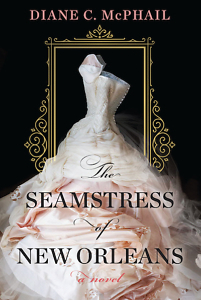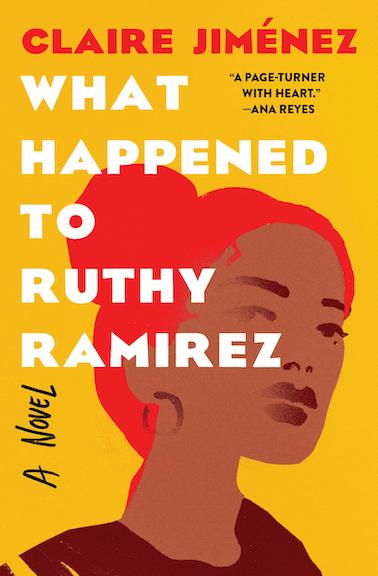Woven in the Seams
Women push the boundaries in turn-of-the-century New Orleans
Diane C. McPhail’s time living in New Orleans coupled with her love of history inspired The Seamstress of New Orleans. While the characters in the novel are fictional, the events and locales echo fact.
 “New Orleans in 1900 was the setting of a grand ball put on by Les Mysterieuses,” McPhail states in the Q&A at the end of the book, “the first all-female krewe of Mardi Gras.” Women took advantage of the leap year to showcase their aspirations for “greater freedom and control” in their lives. During the ball, women are allowed to take on all the freedom of men, such as being the ones to ask the men to dance, while the men are relegated to the traditionally female role of being forced to wait on the sidelines until asked to participate. Two women in particular, however, are forefront in McPhail’s novel.
“New Orleans in 1900 was the setting of a grand ball put on by Les Mysterieuses,” McPhail states in the Q&A at the end of the book, “the first all-female krewe of Mardi Gras.” Women took advantage of the leap year to showcase their aspirations for “greater freedom and control” in their lives. During the ball, women are allowed to take on all the freedom of men, such as being the ones to ask the men to dance, while the men are relegated to the traditionally female role of being forced to wait on the sidelines until asked to participate. Two women in particular, however, are forefront in McPhail’s novel.
The novel opens with a mystery. Constance Halstead waits for her husband, Benton, to depart for the train station before she disguises herself as a man and follows him. Benton has been pestering Constance for money from her trust, which he cannot access without her permission, and she wants to learn why he is so desperate to get to her money when he earns a good salary of his own. On the train, she witnesses Benton gambling and losing rather heavily. When he gets up to exit the vestibule for a smoke, she follows. Benton, thinking she is a young boy, makes a sexual advance. It is only when Constance’s eyes meet his that he recognizes her. “‘You,’ he gasped. His hand gripped her arm.” Pandemonium ensues:
She tore herself free, her hand pushing against him, as he stepped back, floundered on the edge of the step as he grasped at the handrail. The car door swung open. A man raced through the vestibule, arm outstretched. … Off-balance, she threw up her hand. Benton’s slipped from the brass handrail, and his body tilted backward, arms and feet floundering in the open air.
Benton vanishes into the lake flashing below the train and Constance flees, shedding her disguise in an empty bathroom compartment and boarding the next train back home. Her trip, meant to be enlightening, has elicited far more mysteries and questions than answers.
 The story, told in alternating perspectives, shifts to follow another woman, Alice Butterworth. Alice has moved to Chicago at the urging of her mother, who knew her daughter had few prospects on their secluded family farm, which would be inherited by Alice’s brothers. So, Alice’s mother taught her an essential skill: sewing. It is these hours of working together on a piece of clothing or a quilt by the hearth that Alice recalls with fondness during the harsh, cold winters in Chicago. After arriving in the city, Alice gets a job as an experienced seamstress and soon meets her husband, Howard Butterworth, when he enters the shop to order a dress for his mother. The two are married unceremoniously and move into a modest flat.
The story, told in alternating perspectives, shifts to follow another woman, Alice Butterworth. Alice has moved to Chicago at the urging of her mother, who knew her daughter had few prospects on their secluded family farm, which would be inherited by Alice’s brothers. So, Alice’s mother taught her an essential skill: sewing. It is these hours of working together on a piece of clothing or a quilt by the hearth that Alice recalls with fondness during the harsh, cold winters in Chicago. After arriving in the city, Alice gets a job as an experienced seamstress and soon meets her husband, Howard Butterworth, when he enters the shop to order a dress for his mother. The two are married unceremoniously and move into a modest flat.
Constance and Alice are both discovering that they know very little about the men they married. After Alice decides Howard has abandoned her, she flees frigid Chicago and makes her way by train to the warmer climate of New Orleans, where she takes a job as a seamstress instructor for the orphans of the Poydras Asylum for Girls. Through the assured suggestion of a friend, Constance offers Alice, who is poor and pregnant, room and board in her house in exchange for her work on a dress for the Mardi Gras ball.
Over time, Constance and Alice share their mutual experiences of suddenly losing their husbands, as well as the death of an infant son each. Their collaboration on the dress becomes a work of healing for each woman as she seeks to rediscover herself in the absence of what once defined her. New challenges — the imminent arrival of a son for Alice and the threat of the vicious Black Hand gang for Constance — only strengthen the bond between two women, who have more in common than even they know.
Numerous secrets are gradually revealed as Alice and Constance build not only the friendship of a lifetime but a stable future for themselves, their children, the young women of the orphanage, and the women of the krewe. Yet not every secret surfaces. A few remain hidden in the folds of fabric, whispering through the competent, well-trained hands of a seamstress. McPhail’s layered novel drapes itself over the reader like an expertly hemmed dress, simultaneously protecting and displaying the wearer for all to admire — with a few choice mysteries woven into the seams, of course.

Abby N. Lewis is a part-time desk assistant for the North Knoxville Library and an adjunct English instructor at ETSU. She is the author of the poetry collection Reticent and the chapbook This Fluid Journey.


